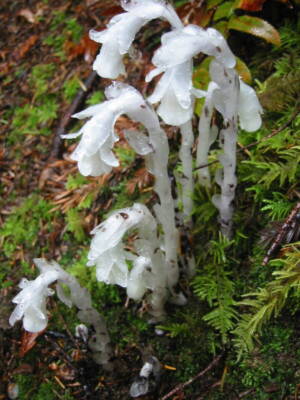In the spirit of inclusion, the author recommends that we call plants that have both male and female flowers “non-binary.”
By Randy Wayne, Plant Ally
In 2022, the National Science Foundation awarded 2.1 million dollars in funds to root out oppression in plant sciences. Since it has been demonstrated beyond a shadow of a doubt that “[a] future in which scientific discoveries are valued and trusted by the general public cannot be achieved without greater inclusion,” I believe that additional funds are necessary to change the way we describe plants so we can be more inclusive.

To be more inclusive, I recommend that we call monecious plants — plants that have both male and female flowers — “non-binary.” This is consistent with the terminology being promoted in kindergarten. Moreover, the familiar, nonthreatening, and ubiquitous occurrence of non-binary plants may help reduce the confusion in those young impressionable five-year-old minds. Warning: poison ivy is non-binary and “is expected to become more widespread in Central New York as a result of global climate change.”
We must also celebrate plants such as Cannabis sativa that John Heslop-Harrison showed to be gender fluid over 70 years ago. He showed that hormone application caused genetically male marijuana plants to produce female flowers. This clearly shows that gender fluidity is a basic biological phenomenon that exists in both the plant and animal — oops — we need a more inclusive word for Kingdom — let’s call them the plant and animal Communes.
Currently, we call plants that have been genetically engineered — transgenic plants — but certainly plants that have not been genetically engineered do not deserve the privileged unhyphenated name of “plants.” Inclusion and equity demands that they should be called cisgenic-plants.
I also think that special funding in plant biology should be set aside to fund research on plants such as black cumin (Nigella sativa) and black mustard (Brassica nigra) to demonstrate our solidarity with black plants and show that their lives matter.
It should not be forgotten that white plants such as Monotropa uniflora that lack chlorophyll are always parasitic — getting their food from plants of color — either directly or indirectly through fungal connections. Moreover, Monotropa uniflora, which heretofore has been known as “Indian pipe” — should be called “Indigenous People’s pipe.”
Lastly, I suggest that funding be given to hire one or two administrators in each plant biology department to “listen” to each plant’s own story, and to monitor bias reporting hotlines and bias incidents reported online to identify and re-educate people who are still using the offensive terminology from the Jim Crowsfoot era. It goes without saying that these administrators should be as diverse as the plants they will protect.
In the “Reality Imitates Satire” department, there’s this: Renaming Indigenous crops and addressing colonial bias is scientific language.
- I Was There When JFK Appeared on ‘The Lead with Jake Tapper’ - July 6, 2025
- The Neanderthal - June 2, 2025
- Oxymoron Harmony - May 27, 2025

